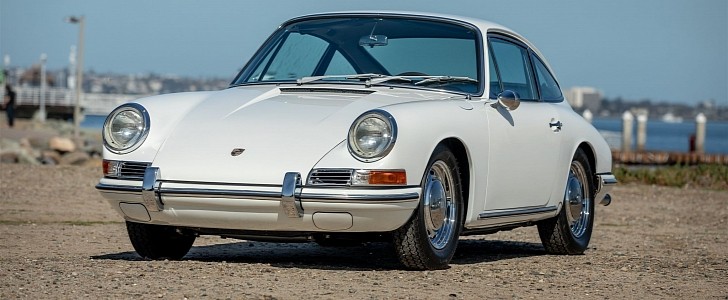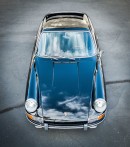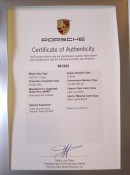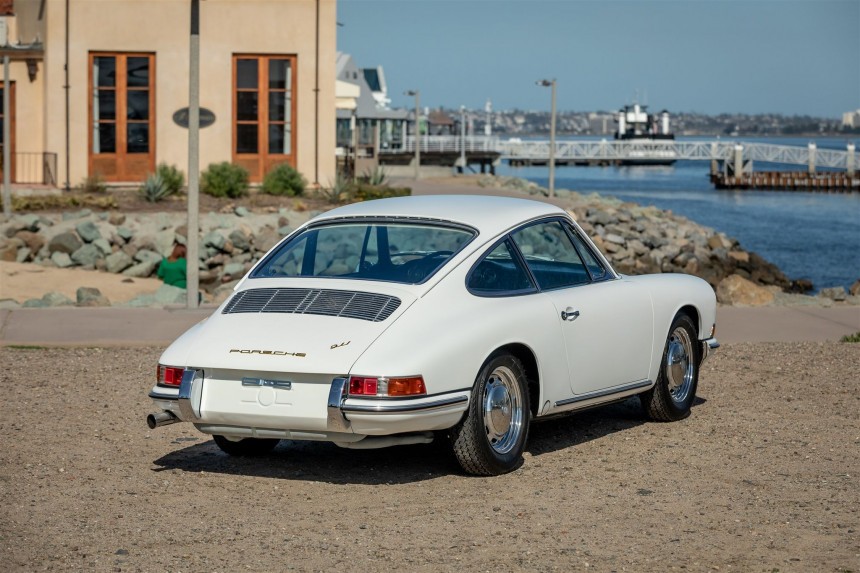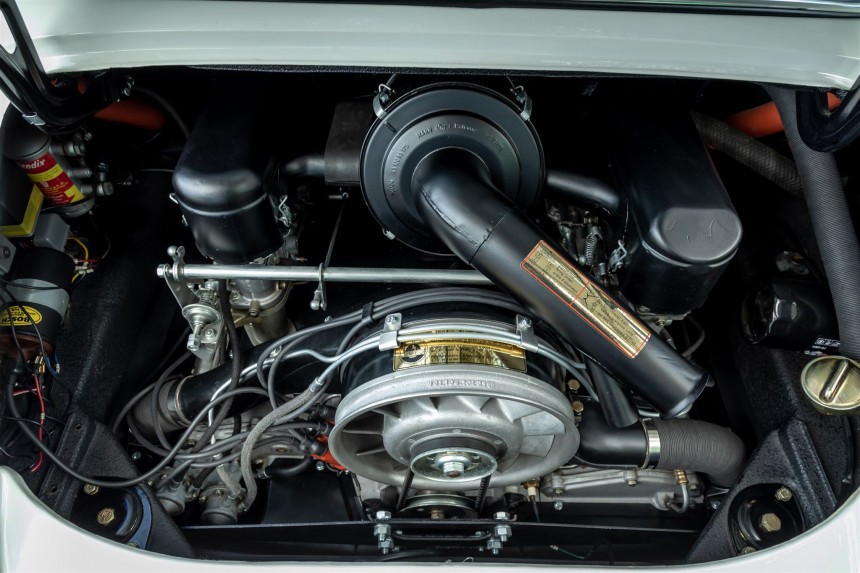Ferdinand Anton Ernst Porsche, a.k.a. Ferry, was intimately connected with all things mechanical from the day he was born. Influenced by Czech automaker Tatra, his father gave us the Volkswagen Beetle in 1938. In the aftermath of World War II, Ferdinand Jr. was instrumental in the creation of the 356, which paved the way for the quintessential German sports car.
Ferdinand “Butzi” Porsche, the son of Ferry, penned the 911 with the help of a gentleman by the name of Erwin Komenda. The Austrian designer previously worked with Ferdinand Sr. on the Beetle and Ferdinand Jr. on the 356, which explains why these old-timers are strikingly analogous.
Originally called 901, Porsche had the 911’s middle zero replaced with one after Peugeot challenged the Zuffenhausen-based automaker to legal battle. The French automaker owned the rights to this designation even though it never used it, but still, a question must be posed. Have you ever dreamed of owning an underpowered supermini over a six-cylinder sports car? Incontestably, Peugeot’s hissy fit was all for naught because the Neunelfer evolved into a golden standard that everyone fancies to own and drive.
Presented at the 1963 Frankfurt Motor Show, the rear-engined sports car entered production the following year. Internally referred to as the O series, the 911 sold 82 cars under the 901 nameplate. Various part numbers carried the 901 prefix for several more years after the switch to 911, hence the O in O series. The boxer engine’s prefix was 901 until 1970, when it switched to 911. To whom it may concern, the five-speed box fitted to the O-series 911 is referred to as 901/XX. Peugeot must’ve been livid back then, alright!
Longer and wider than the 356 it succeeded, the Neunelfer is built on a unitary steel chassis that was developed with interior space in mind. 2,211 millimeters (87 inches) long from the front axle to the rear axle, the O-series 911 uses MacPherson struts and wishbones up front. An anti-roll bar, the steering rack, and 61.4-liter (16.2-gallon) fuel tank are integrated up front as well, along with a full-size spare wheel and tire and the 12-volt battery.
Out back, Porsche couldn’t upgrade the swing axle of the 356 for this application. The German automaker developed an independent setup for the 911. The rear suspension consists of semi-trailing arms and torsion bars, a pairing that responds much better to imperfections in the road. Fitted with 15- by 4.5-inch steelies beautified with chromed hub caps, the O series can stop on a dime thanks to 282- and 285-millimeter disc brakes from ATE.
Tipping the scales at 1,030 kilograms (2,271 pounds), the O series kicked off production in August 1964. The first U.S.-spec model arrived stateside in 1965, and that year, Porsche also started delivering RHD models to the United Kingdom. 1965 also saw the introduction of the four-cylinder 912, essentially a budget variant that initially outsold the six-cylinder sibling.
An evolution of the flat-eight mill that Porsche used in the 804, the all-alloy boxer in the O-series 911 rocks hemispherical combustion chambers, a configuration introduced by Belgian automaker Pipe in 1905. We currently associate Hemi with Dodge muscle cars, but do bear in mind that Chrysler took inspiration from Pipe and several other companies for its iconic V8s.
The 901/01 uses dry-sump lubrication, a seven main bearing forged crankshaft, overhead camshafts, cast-iron cylinder liners, and a couple of triple-choke carburetors from Solex. An oversquare design due to its 80-mm bore and 66-mm stroke, this lump runs a compression ratio of 9.1:1.
Good for 130 ps (128 horsepower) and 174 Nm (129 pound-foot), the O-series 911 can hit 210 kilometers per hour (130 miles per hour) with a little bit of patience. 100 kilometers per hour (62 miles per hour) takes just under nine seconds, and the ¼-mile dash surely won’t blow your socks off.
Come 1966, the Solex 40PI carbs were discontinued from the Neunelfer in favor of Weber 40 IDA units. The 158-horsepower 911 S rolled out in July 1966 with the 901/02 engine that features the aforementioned Webers, a slightly higher compression ratio, a superior exhaust design, and a red engine cover. Porsche had also replaced the steelies with forged alloys from Fuchs. Ventilated disc brakes, a beefier anti-roll bar up front, another anti-roll bar in the rear, and slightly wider tracks also need to be highlighted.
When the S entered production in October 1966, the German automaker had also replaced the forged valve rockers with cast-iron units. Two months later, Porsche started production of the 911 Targa, which could be had in S and non-S flavors. Another highlight of the O series came in the form of the Rally Kit, which pushed the 2.0-liter boxer to roughly 170 ponies. The Rally Kit II added a free-flow exhaust which improved the output by 5 ponies.
O-series production came to a screeching halt in July 1967, replaced by the A series that we’ll cover in due time. From the A series forward, the designation would change annually. O-series production totaled 718 Targas, 3,422 units of the S in coupe flavor, and 8,520 units of the standard coupe.
Originally called 901, Porsche had the 911’s middle zero replaced with one after Peugeot challenged the Zuffenhausen-based automaker to legal battle. The French automaker owned the rights to this designation even though it never used it, but still, a question must be posed. Have you ever dreamed of owning an underpowered supermini over a six-cylinder sports car? Incontestably, Peugeot’s hissy fit was all for naught because the Neunelfer evolved into a golden standard that everyone fancies to own and drive.
Presented at the 1963 Frankfurt Motor Show, the rear-engined sports car entered production the following year. Internally referred to as the O series, the 911 sold 82 cars under the 901 nameplate. Various part numbers carried the 901 prefix for several more years after the switch to 911, hence the O in O series. The boxer engine’s prefix was 901 until 1970, when it switched to 911. To whom it may concern, the five-speed box fitted to the O-series 911 is referred to as 901/XX. Peugeot must’ve been livid back then, alright!
Longer and wider than the 356 it succeeded, the Neunelfer is built on a unitary steel chassis that was developed with interior space in mind. 2,211 millimeters (87 inches) long from the front axle to the rear axle, the O-series 911 uses MacPherson struts and wishbones up front. An anti-roll bar, the steering rack, and 61.4-liter (16.2-gallon) fuel tank are integrated up front as well, along with a full-size spare wheel and tire and the 12-volt battery.
Tipping the scales at 1,030 kilograms (2,271 pounds), the O series kicked off production in August 1964. The first U.S.-spec model arrived stateside in 1965, and that year, Porsche also started delivering RHD models to the United Kingdom. 1965 also saw the introduction of the four-cylinder 912, essentially a budget variant that initially outsold the six-cylinder sibling.
An evolution of the flat-eight mill that Porsche used in the 804, the all-alloy boxer in the O-series 911 rocks hemispherical combustion chambers, a configuration introduced by Belgian automaker Pipe in 1905. We currently associate Hemi with Dodge muscle cars, but do bear in mind that Chrysler took inspiration from Pipe and several other companies for its iconic V8s.
The 901/01 uses dry-sump lubrication, a seven main bearing forged crankshaft, overhead camshafts, cast-iron cylinder liners, and a couple of triple-choke carburetors from Solex. An oversquare design due to its 80-mm bore and 66-mm stroke, this lump runs a compression ratio of 9.1:1.
Come 1966, the Solex 40PI carbs were discontinued from the Neunelfer in favor of Weber 40 IDA units. The 158-horsepower 911 S rolled out in July 1966 with the 901/02 engine that features the aforementioned Webers, a slightly higher compression ratio, a superior exhaust design, and a red engine cover. Porsche had also replaced the steelies with forged alloys from Fuchs. Ventilated disc brakes, a beefier anti-roll bar up front, another anti-roll bar in the rear, and slightly wider tracks also need to be highlighted.
When the S entered production in October 1966, the German automaker had also replaced the forged valve rockers with cast-iron units. Two months later, Porsche started production of the 911 Targa, which could be had in S and non-S flavors. Another highlight of the O series came in the form of the Rally Kit, which pushed the 2.0-liter boxer to roughly 170 ponies. The Rally Kit II added a free-flow exhaust which improved the output by 5 ponies.
O-series production came to a screeching halt in July 1967, replaced by the A series that we’ll cover in due time. From the A series forward, the designation would change annually. O-series production totaled 718 Targas, 3,422 units of the S in coupe flavor, and 8,520 units of the standard coupe.
